Understanding Thumb Joint Pain: Causes, Symptoms, and Treatment
What is a Thumb Joint Pain?
Thumb joint pain, often referred to as thumb arthritis or basal joint arthritis, is a common condition that can significantly impact one’s ability to perform daily tasks.
This discomfort typically arises from the wear and tear of the joint at the base of the thumb, known as the basal joint or carpometacarpal (CMC) joint. As a crucial part of the hand’s dexterity and functionality, the thumb’s pain can be debilitating, leading to limited hand movements and decreased quality of life.
This introduction sets the stage for a deeper exploration of the causes, symptoms, diagnosis, and treatment options associated with thumb joint pain.
Pain or a lack of action in the thumb could suggest an underlying health disease, such as arthritis sprain, or other damage. Exercise, splinting, and medicine are some of the therapy options.
Introduction:
Sometimes, someone may experience discomfort or a lack of motion in the thumb. These symptoms could mean several underlying health needs, going from systemic diseases, such as arthritis, to sprains and other damages.
when you age, your thumb joint is likely to experience pain when the cartilage on the ends of the bones that make up the joint at the base of your thumb wears away also called the carpometacarpal (CMC) joint.
Thumb joint discomfort induces severe pain, swelling, and reduced strength and range of movement, making it difficult to do daily tasks, such as flexing doorknobs and opening jars. Therapy generally applies a combination of medication and splints. A severe thumb joint might need surgery.
Anatomy
Three Joints can form the Thumb
- Carpometacarpal (CMC) Joint
- Metacarpophalangeal (MP) Joint
- Interphalangeal (IP) Joint
CMC Joint
The CMC joint of the thumb is situated at the junction point of the thumb and the wrist. Break down the terms in the name, carpometacarpal, and you get carpo- (wrist) and metacarpal (hand bone). This joint is typically involved in arthritis.
The CMC joint’s main role is to allow the thumb to open and hold wide objects, like a basketball or (for us mortals) a large glass of your favorite drink.
MP Joint
The MP joint of the thumb is the central joint of the thumb, found between the CMC joint and the tip of the thumb. Break down the words in the name, metacarpophalangeal, and you reach metacarpal– (hand bone) and phalangeal (finger bone). This joint activity is a lot in some people and just a tiny in other people. Reach MP thumb joints about your family and you may find some big distinctions.
Sometimes this joint is damaged when you stop it in a skiing or sports injury. This forces the joint to pop out of place and tear a ligament. This is occasionally called skier’s thumb. The ligament can recover without surgery if it’s not pushed out of place.
IP Joint
The IP joint of the thumb is located at the end of the thumb. The word interphalangeal means “between the phalanges”. Important tendons connect on the bottom and top of this joint and push the tip of your thumb back and forth.
If you jam your thumb and the end of the thumb doesn’t move normally, this could be a sign of a ruptured or torn tendon. Joints are moved by tendons; when one is torn from the bone, the joint is affected.
Causes of Thumb Joint Pain
Thumb joint pain typically occurs with aging. Previous trauma or damage to the thumb joint also can induce thumb pain.
In a normal thumb joint, cartilage covers the ends of the bones — acting as a cushion and permitting the bones to glide smoothly against each other. With thumb arthritis, the cartilage that protects the ends of the bones degenerates, and its smooth surface roughens. The subsequent friction and joint injury are caused by the bones rubbing against one another.
The harm to the joint might result in the development of new bone along the sides of the current bone (bone spurs), which can create noticeable lumps on your thumb joint. Our opposable thumb joints arrive in handy, and we tend to utilize our thumbs for lots of goals. If you have pain in your thumb joints, there are a pair of things that could be inducing it.
De Quervain tenosynovitis
De Quervain tenosynovitis is a painful disease affecting the tendons on the thumb side of the wrist. If you suffer from de Quervain tenosynovitis, you will likely feel pain when you turn your wrist, hold anything, or make a fist.
Although the actual cause of de Quervain tenosynovitis is not known, any action that relies on repetitious hand or wrist motion such as operating in the garden, playing golf or racket sports, or lifting a baby c
an make it more harmful.
Basal joint or rheumatoid arthritis
As you age, the cushion-like cartilage in your thumb joint can deteriorate, leading to the signs of thumb arthritis. Loss of thumb mobility and grip strength are other symptoms.
Osteoarthritis, which affects both the bone and the joint, and rheumatoid arthritis, an autoimmune disease, can both be associated with thumb arthritis. Arthritis-related thumb discomfort at the thumb joint can feel scorching, stabby, or more subtly creaky.
Carpal tunnel syndrome
Carpal tunnel syndrome can cause pain in your thumb joint. Carpal tunnel syndrome pain can feel like achy, burning, tingling, or numbness in your fingers, joints in your hands, or at your wrist.
In the United States, up to 6% of adults may suffer from carpal tunnel syndrome. Compared to men, women are more likely to have the condition.
Injury or sprain
The damaged ligaments in your thumb ultimately lead to thumb sprains, jammed thumbs, and “skier’s thumb.”These damages, typically occurring during contact sports or falls, can induce pain in the area of your joint. Swelling and stiffness could also be the results of a thumb injury.
Your thumb may even be in pain if it is broken. If you have a broken thumb, you will feel severe pain radiating from the site of the break. This serious, inner discomfort may make you feel nauseated.
Overuse of thumb
Just like any additional joint, the thumb can be overexposed or overextended. When your thumb is overworked, the joint can become painful and sore. An overused joint may sense warmth and tingling, in addition to existing pain.
Symptoms of Thumb Joint Pain
Pain is the first and most expected symptom of thumb joint pain. Pain can appear at the base of your thumb when you grab, hold, or pinch things, or use your thumb to apply force.
- Swelling, stiffness, and tenderness at the bottom of your thumb
- Reduced strength when pinching or gripping objects
- reduce the range of motion
- The joint at the base of your thumb is enlarged or looks bony
Risk factors
Thumb arthritis risk factors include the following:
- Female.
- Age above 45 years.
- Obesity.
- Certain hereditary diseases, such as joint ligament laxity and malformed joints.
- Trauma to your thumb joint, such as fractures and sprains.
- Diseases that change the real structure and function of cartilage, such as rheumatoid arthritis. Although osteoarthritis is the most common reason for thumb arthritis, rheumatoid arthritis can also involve the CMC joint, usually to a smaller extent than other joints of the hand.
- Many Activities and jobs put high stress on the thumb joint.
When to contact a doctor?
People should reach a physician if their thumb pain is steady, severe, or impacts their capacity to do regular tasks and movements.
People should seek quick medical alerts if they think they may have dislocated or fractured their thumb. Some symptoms to look out for include:
- Incapacity to move the thumb
- Swelling or warmth in or near the thumb
- A thumb that seems crooked or feels unstable
Diagnosis:
To examine the underlying cause for thumb pain, a doctor will perform a physical examination and request about potential reasons. If the reason for the pain is unclear, the doctor may order imaging tests, such as an X-ray, MRI, or ultrasound.
Imaging methods, typically X-rays, can detect symptoms of thumb arthritis, such as:
- Bone spurs
- Worn-down cartilage
- Loss of joint space
- Bone scan
- CT scan
- MRI
Treatment of Thumb Joint Pain
In the early phases of thumb pain therapy usually involves a mixture of non-surgical therapies. If your thumb pain is severe, surgery might be essential.
Minor damages where the ligament has not torn may be recovered with basic home care. Following the principles of RICE may support:
- Rest: Sustain the thumb and relax it for as much as possible.
- Ice: Use an ice pack over the pain area for 10 minutes every hour for the first day.
- Compress: Wear an elastic (ACE) bandage to decrease swelling.
- Elevate: Hold the hand lifted above the heart level to decrease swelling and pain.
If the thumb ligament has a partial tear, a person will be required to wear a quick cast to immobilize the thumb.
If the injury has generated a complete tear to the thumb ligament, an individual will need operative repair for it.
Medication
To reduce pain, your physician might suggest:
- Topical medicines, such as capsaicin or diclofenac, which are applied to the skin over the joint
- Acetaminophen (Tylenol, among others), ibuprofen (Advil, Motrin IB, among others), or naproxen sodium (Aleve) are examples of over-the-counter painkillers.
- Medicine pain relievers, such as celecoxib (Celebrex) or tramadol (Conzip, Ultram)
A broken or fractured thumb
In some cases, a bone within the thumb may be damaged. These damages induce intense pain that begins at the site of the injured bone and can radiate through the wrist and forearm.
The bone from the tip of the thumb to the knuckle is called the distal phalange. This correlates to the proximal phalange, which spreads to the base of the thumb. Within the hand, the proximal phalange links to the first metacarpal, which opens to the base of the hand.
Depending on the type of thumb fracture and its location, the thumb may also evolve hazardously. It may move loosely from side to side.
Splint
A splint can help your joints and limit the motion of your thumb and wrist. Wearing a splint can be done both during the day and at night.
Splints can help:
- Decrease pain
- Encourage proper positioning of your joints while you complete tasks
- Rest your joint
Injections
If pain medications and a splint are not effective, your physician can suggest injecting a long-acting corticosteroid into your thumb joint. Corticosteroid injections can deliver temporary pain relief and decrease inflammation.
Surgery
If you do not recover from other therapies or if you are barely able to flex and twist your thumb, your physician might suggest surgery.
- Joint fusion (arthrodesis). The bones in the involved joint are permanently connected. The fused joint can carry weight without pain but has no mobility.
- Osteotomy. The bones in the involved joint are repositioned to allow correct deformities.
- Trapeziectomy. Trapeziectomy is when your thumb joint’s trapezium (one of the bones) is broken.
- Joint replacement (arthroplasty). All or part of the involved joint is released and replaced with a graft from one of your tendons.
This operation can all be performed on an outpatient basis. After surgery, you can anticipate wearing a cast or splint over your thumb and wrist for up to 6 weeks. Once the cast is removed, you might have physical therapy to assist you in regaining hand strength and motion.
Exercises
Exercise can help to improve mobility and strength around the thumb.
Here we describe Exercises to reduce thumb joint pain:
Exercise can help to support muscles in the hand and improve mobility.
Thumb and finger squeeze

This activity can assist in strengthening the whole hand and forearm.
- Grasp a ball between the thumb and first finger
- Press for five seconds and release
- Repeat up to ten times
- Complete three sets of these
- Switch hands and repeat
Thumb and finger lift
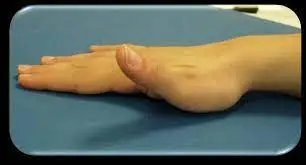
Strengthening the individual digits of the hand can help to target problem areas, such as the thumb. For this exercise, all a person needs is a flat surface.
- Put both hands flat on a surface
- Extend both thumbs gradually while keeping all other fingers flat
- Get the thumb back down
- Repeat this per finger of the hand
- Repeat 30 times.
Thumb stretch
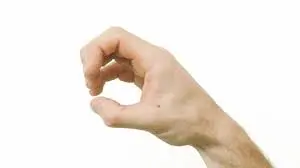
Many thumb damages can result from actions involving gripping. Especially, working on the opposable movement of the thumb may help support the muscles and joints in the digit.
- Lie the back of the hand on a table, with the palm facing upwards and fingers extending out
- Get the thumb over to the base of the little finger
- Maintain and release back to the initial position
- Repeat up to ten times
- Repeat on the opposing hand
Thumb bend
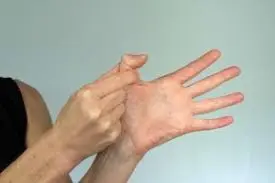
- Initially, grasp your left hand out, with all of your fingers extended.
- Flex your thumb inward toward your palm.
- Push toward the bottom of your pinky finger with your thumb. If you can not reach your pinky finger, do not worry. Just push your thumb as much as you can.
- Maintain the position for 5 seconds, then return your thumb to the initial position.
- Repeat ten times.
- Do the activity with your opposite hand.
Make an ‘O’
Accomplish this movement a few times a day on both hands. This stretch can be done whenever your hands are sore or stiff.
- Begin with your right hand out and fingers straight.
- Curve all of your fingers inward until they connect. Your fingers should form the figure of an “O.”
- Maintain this position for 5 seconds. Then, extend your fingers again.
- Repeat on the left hand.
Wrist stretch

Do not forget about your wrists, which can even get sore and stiff from thumb pain.
- your left arm out in front of you, palm down.
- With your right hand, gently push down on the left hand until you feel a stretch in your wrist and arm.
- Maintain the position for 10 seconds.
- Repeat 15 times.
- Then, do the entire movement with the right hand.
Roll back and forth
Do this activity with a small ball, such as a tennis ball or stress ball.
- Put the ball on a flat surface like a table.
- Using your left hand, roll the ball from your palm to the tips of your fingers to stretch out individual digits.
- The ball should be rolled back to its starting place.
- Do this exercise with your right hand.
Thumb extension

- Place one or more elastic bands about all of your fingers and make an open fist with your left hand.
- Relax your hand on a flat surface.
- Your thumb should bend and move away from the hand.
- Hold for five seconds.
- Repeat this exercise 10 to 20 times.
- Do this exercise with your right hand.
Self-care for thumb pain
Some available self-care tips for thumb pain include:
- Avoiding repetitious hand activities
- Using a splint or brace to keep the thumb immobile
- Using an ice pack to decrease inflammation
- Avoiding wearing jewelry or gloves that tighten the thumb
The discomfort in the thumb does not pose a serious health danger by itself. But it might also be a symptom of something more severe, like arthritis or a shattered bone. Individuals can treat thumb pain at home by relaxing the thumb, using ice packs, and taking painkillers. Individuals should take medical care if their thumb pain is constant, severe, or significantly hampers their ability to complete daily activities.
FAQ
How do I get to recover from thumb joint pain?
Apply Ice over the joint for 10 to 15 minutes every two hours a day. Carry an anti-inflammatory medicine, such as aspirin or ibuprofen, to assist in decreasing inflammation and swelling. Wear a supporting splint to limit the motion of your thumb and allow the joint to relax. The splint may cover both the wrist and the thumb.
Why is my thumb joint aching?
There are many reasons for thumb joint pain including: trigger thumb, arthritis, tendonitis, carpal tunnel syndrome, skier’s thumb, and many more.
Which are the first indications of arthritis in the thumb joint?
Swelling and tenderness at the bottom of the thumb.
A pain after long use of the thumb.
Loss of power when grasping or pinching with your thumb.
Limited movement.
Can thumb joint pain heal?
While there is no cure for arthritis in your thumb, there are various simple therapies that can help reduce symptoms for many individuals. Talk with a physician or physical therapist about which therapies might work best for you.
Which vitamin is lacking if you have thumb joint pain?
the most essential nutrient that boosts bone health is Vitamin D. Multiple analyses show that a lack of this vitamin can lead to joint pain and swelling. As Vitamin D is needed for bone building and bone health, therefore a deficiency of it will negatively impact the bones.
Can thumb ache to be serious?
Pain or a lack of action in the thumb could signify an underlying health disorder, such as arthritis sprain, or other injury. Training, splinting, and medicine are some of the therapy options. Sometimes, a person may feel pain or a lack of action in the thumb.
How prolonged can thumb pain last?
A mild sprain mostly cures within 4 to 6 weeks if you wear a splint or cast to immobilize your thumb and abstain from actions that irritate it. A more intense thumb sprain, such as a grade 3 sprain, could take several months before it is fully healed and you can use your thumb like normal again.
Which home remedy is used for arthritis in thumbs?
Lifestyle and home remedies
Modify hand instruments. Consider buying adaptive equipment like jar openers, key turners, and large zipper pulls created for people with limited hand power.
Apply cold. Icing the joint for 10 to 15 minutes several times a day can assist in reducing swelling and pain.
Apply heat.
What is thumb pain called?
Thumb tendonitis (De Quervain’s tenosynovitis) induces thumb joint pain in tendons around the base of the thumb, on the inside of the wrist and forearm. Some physicians call it De Quervain’s tendinosis. Both terms guide inflammation along the thumb.
Can phone abuse induce thumb pain?
All that texting, swiping, and scrolling can lead to physical health problems. Eye strain and neck pain, as well as problems in the hands, wrists, and particularly thumbs, can all be signs you are spending more time on your phone. Now there is a name for the pain and strain in the thumb: texting thumb.
References
- Watson, K. (2023, March 13). What’s causing the pain on or near my thumb, and how do I treat it? Healthline.
- Eske, J. (2023, March 29). Why does my thumb hurt and how to remedy it?
- 5 Causes of Thumb Pain | The Hand Society. (n.d.).
- Cpt, S. C. (2023, March 6). What does arthritis in the fingers feel like?

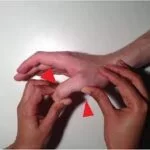
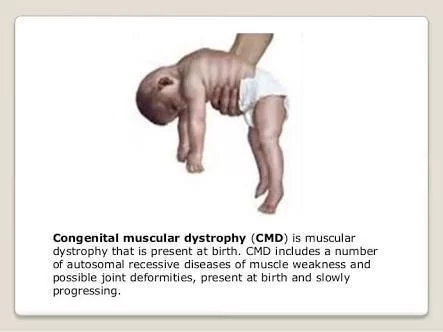

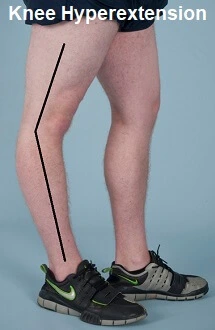
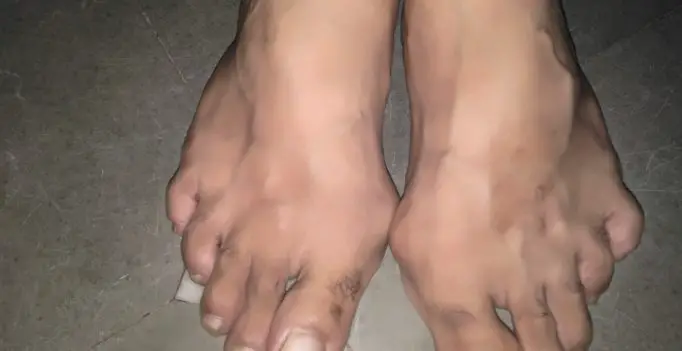

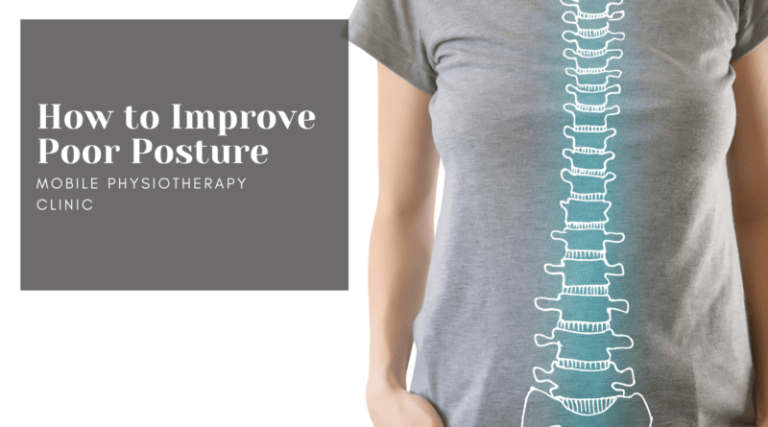
3 Comments